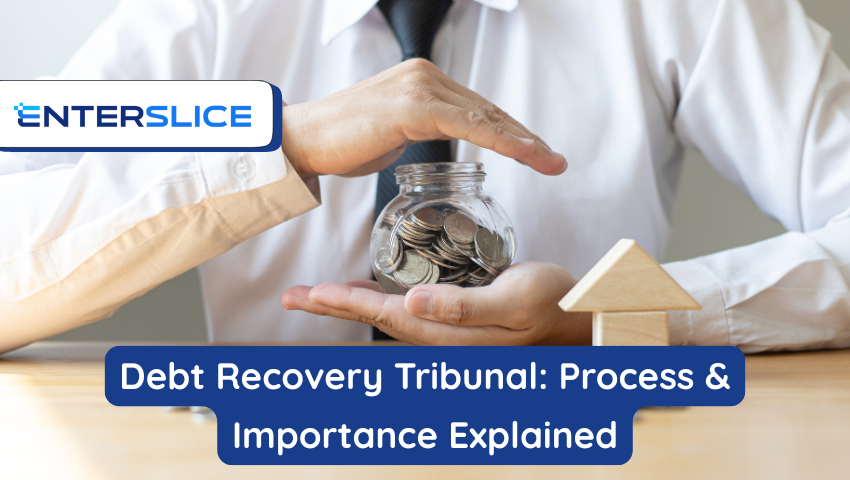Debt Recovery Tribunal: Process & Importance Explained

In today’s dynamic business environment, financial disputes between lenders and borrowers are common. When borrowers default on repayment of secured loans, it not only affects banks and financial institutions but also impacts the overall financial system. To address such issues quickly and fairly, the Government of India established the Debt Recovery Tribunal (DRT).
The DRT plays a crucial role in ensuring faster resolutions for loan recovery cases, helping financial institutions maintain stability while giving borrowers a platform to present their side.
What is the Debt Recovery Tribunal?
The Debt Recovery Tribunal is a special judicial body set up under the Recovery of Debts Due to Banks and Financial Institutions Act, 1993. Its primary purpose is to handle cases where banks and financial institutions seek to recover loans from borrowers who have defaulted.
Unlike traditional courts, the DRT functions with a streamlined process that focuses exclusively on debt-related disputes. This makes the system more efficient and reduces the burden on civil courts.
How Does the DRT Work?
The process begins when a bank or financial institution files an application with the Debt Recovery Tribunal for recovery of dues. Once admitted, the tribunal issues notices to the borrower and conducts hearings. Evidence is reviewed, and both parties are given opportunities to present their case.
If the tribunal rules in favor of the lender, it issues a recovery certificate, which is then executed by the Recovery Officer. This certificate gives the lender the legal right to recover the dues, often by attaching the borrower’s property, bank accounts, or other assets.
Importance of Debt Recovery Tribunals
-
Speedy Resolution: Cases at the DRT are generally resolved faster than traditional court proceedings.
-
Specialized Focus: Since DRTs deal only with debt recovery matters, they offer a more specialized approach.
-
Reduced Burden on Courts: By shifting financial disputes to tribunals, civil courts are freed up to handle other cases.
-
Fair Platform: Borrowers also have the chance to contest claims and provide evidence, ensuring balance in the system.
Limitations and Challenges
While DRTs have improved the debt recovery process, they face challenges such as backlog of cases and shortage of staff in some regions. Additionally, appeals made to the Debt Recovery Appellate Tribunal (DRAT) can sometimes delay the final resolution. Strengthening infrastructure and increasing tribunal capacity are necessary to ensure smooth functioning.
Conclusion
The Debt Recovery Tribunal has become a critical part of India’s financial and legal framework. It ensures lenders have an effective mechanism to recover dues while borrowers get a fair chance to defend themselves. For businesses and individuals alike, understanding how the DRT functions is essential, especially in cases of loan defaults.
FAQs
1. What is the main function of the Debt Recovery Tribunal?
The DRT helps banks and financial institutions recover dues from defaulting borrowers through a faster and specialized legal process.
2. Who can file a case in the DRT?
Primarily, banks and financial institutions can file cases in the DRT if the loan amount exceeds ₹20 lakhs.
3. Can borrowers appeal against a DRT decision?
Yes, borrowers can appeal to the Debt Recovery Appellate Tribunal (DRAT) if they are not satisfied with the DRT’s order.
4. How long does the debt recovery process take in the DRT?
While timelines vary, DRT proceedings are generally faster than traditional court cases, often resolved within a year.







